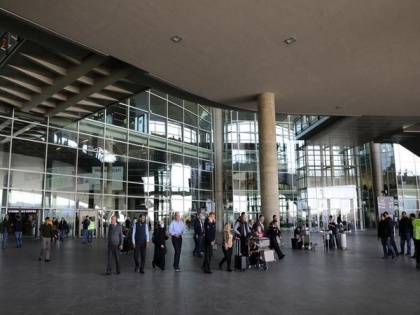Air passenger demand plunges on COVID-19 travel restrictions
By ANI | Published: April 3, 2020 12:24 PM2020-04-03T12:24:15+5:302020-04-03T13:14:20+5:30
Passenger traffic data for February released by the International Air Transport Association (IATA) shows that demand (measured in total revenue passenger kilometres or RPKs) fell 14.1 per cent compared to February 2019.

Air passenger demand plunges on COVID-19 travel restrictions
Geneva [Switzerland], April 3 : Passenger traffic data for February released by the International Air Transport Association (IATA) shows that demand (measured in total revenue passenger kilometres or RPKs) fell 14.1 per cent compared to February 2019.
This was the steepest decline in traffic since 9/11 and reflected collapsing domestic travel in China and sharply falling international demand to/from and within the Asia Pacific region, owing to the spreading COVID-19 virus and government-imposed travel restrictions.
February capacity (available seat kilometres or ASKs) fell 8.7 per cent as airlines scrambled to trim capacity in line with plunging traffic, and load factor fell 4.8 percentage points to 75.9 per cent.
"Airlines were hit by a sledgehammer called COVID-19 in February. Borders were closed in an effort to stop the spread of the virus. And the impact on aviation has left airlines with little to do except cut costs and take emergency measures in an attempt to survive in these extraordinary circumstances," said IATA's Director General and CEO Alexandre de Juniac.
"The 14.1 per cent global fall in demand is severe, but for carriers in the Asia Pacific the drop was 41 per cent. And it has only grown worse. Without a doubt this is the biggest crisis that the industry has ever faced," he said.
February international passenger demand fell 10.1 per cent compared to February 2019, the worst outcome since the 2003 SARS outbreak and a reversal from the 2.6 per cent traffic increase recorded in January.
Significantly, Chinese airlines' domestic traffic fell 83.6 per cent in February, the worst outcome since IATA began tracking the market in 2000. With the easing of some restrictions on internal travel in March, domestic demand is showing some tentative signs of improvement.
US airlines enjoyed one of their strongest months in February, as domestic traffic jumped 10.1 per cent. Demand fell toward the end of the month, however, with the full impact of COVID-19 expected to show in March results.
Europe and the Middle East were the only regions to see a year-over-year traffic rise. Capacity fell 5 per cent and load factor plunged 4.2 percentage points to 75.3 per cent.Asia Pacific airlines' February traffic plummeted 30.4 per cent compared to the year-ago period, steeply reversing a 3 per cent gain recorded in January. Capacity fell 16.9 per cent and load factor collapsed to 67.9 per cent, a 13.2-percentage point drop compared to February 2019.
"This is aviation's darkest hour and it is difficult to see a sunrise ahead unless governments do more to support the industry through this unprecedented global crisis," said de Juniac.
IATA represents some 290 airlines comprising 82 per cent of global air traffic.
( With inputs from ANI )
Open in app